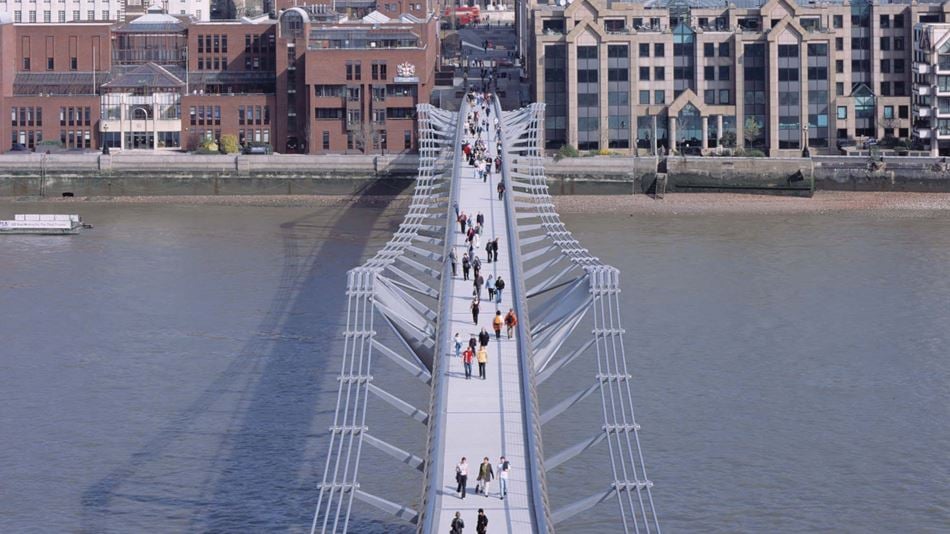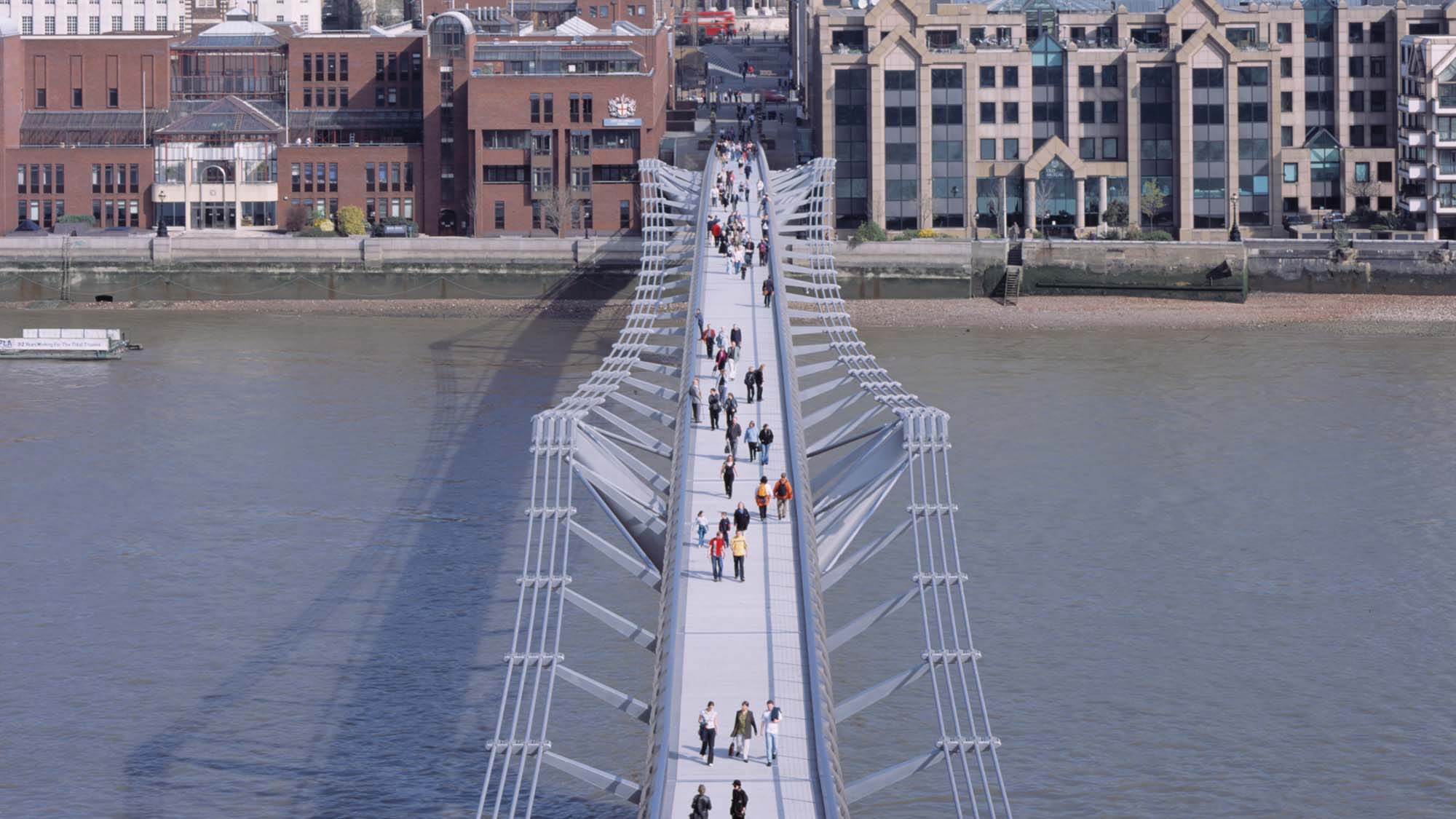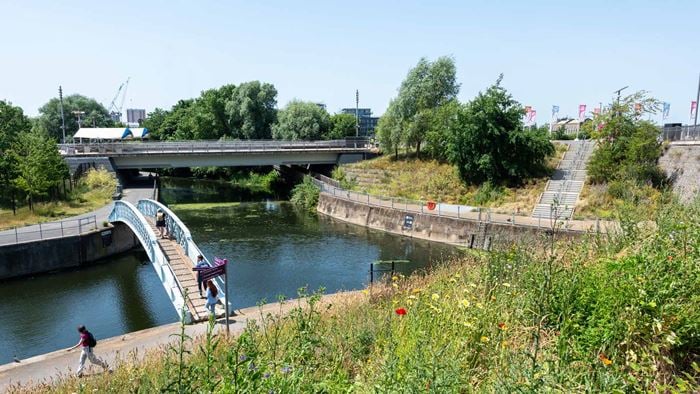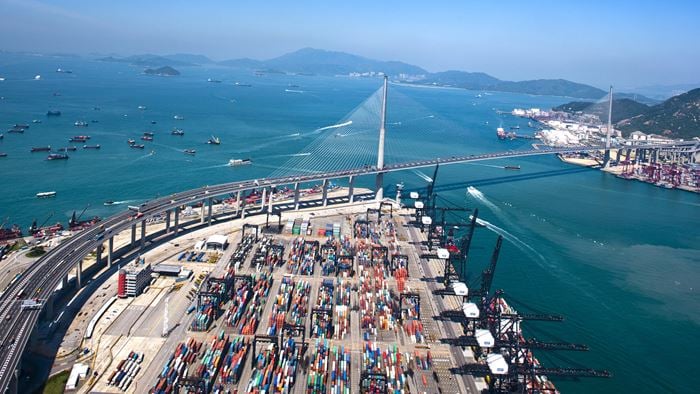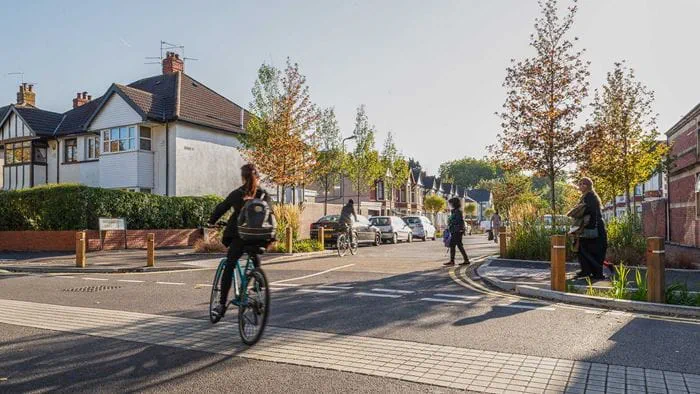The Millennium Bridge has become one of London’s most iconic landmarks since it first opened to the public in 2000. Created as a collaboration between Arup, Foster + Partners, and sculptor, Sir Anthony Caro, the long-span suspension bridge plays a vital role in connecting St. Paul’s Cathedral and the Tate Modern – along with their surrounding areas. Spanning 325 metres, the bridge enables pedestrians to transit easily between these two popular destinations, while experiencing the River Thames’ remarkable views.
The bridge’s minimalist design seamlessly combines art and engineering to provide users with a rare mix of convenience and delight, complementing the location’s artistic significance. However, while the design’s aesthetics were simple, its technical challenges were vast and complex. To navigate these complexities, our team accomplished technical innovations that continue to shape industry codes and standards to this day.
Designing for experience
Before the Millennium Bridge, pedestrians travelling between the Tate Modern and St Paul’s Cathedral would need to take an extended detour across either Southwark Bridge or Blackfriars Bridge. As both permitted vehicles, this made for an inconvenient and uncomfortable journey for pedestrians – with their experience of the area’s compelling scenery being marred by suboptimal sightlines, the noise of traffic, and the smell of exhaust fumes.
Working closely with Foster + Partners, we designed the Millennium Bridge to offer pedestrians a more practical and enjoyable journey. The dedicated footbridge was carefully positioned directly in between St Paul’s Cathedral and the Tate Modern. This created a captivating view that is framed by the cathedral, while helping to minimise pedestrian journey times.

The Millennium Bridge’s unique design is characterised by an unusually shallow crossing, making it the lowest suspension bridge of its kind. This enabled its supporting structures to be positioned below the sightline of users, providing visitors with an unobscured, 360-degree panoramic view of their surroundings. To make this atypical design possible, we took an equally unique approach to the structure’s groundwork, which ensured that it could withstand the bridge’s exceptional load requirements.
Additionally, our plans for the Millennium Bridge considered everyone within its surrounding area. The bridge’s shallow structure was not only visually compelling, but also enabled it to blend harmoniously with the location’s existing scenery, preserving the views of nearby residents. In turn, its uniquely flat underside helped to maintain sufficient space for boat users passing underneath, enabling them to travel without interruption.
Resolving technical challenges through innovation
By design, the Millennium Bridge’s structure was made to flex in response to wind and pedestrian loads. However, when the bridge opened in June 2000, users were greeted by a distinct wobble. Although this was entirely safe, we understood that this sideways movement of +/- 100mm made for a disconcerting pedestrian experience. To resolve this, we drew on expertise from across the firm. Specialists in structural engineering, advanced numerical simulation, mechanical design, structural dynamics, and wind engineering all came together to find a solution.
Building on our initial findings from laboratory work, we conducted a controlled test to monitor the bridge’s response to crowds of people in a real-life situation, which aimed to identify the reason behind its excessive movement. We discovered that the forces exerted by pedestrians on the bridge were causing it to oscillate. We then found that crowds of people were exacerbating this problem as they collectively tried to restabilise themselves as the bridge wobbled, which fed into a positive feedback loop that increased the bridge’s movement further.
To resolve this loading phenomenon, our team installed damping devices within the bridge’s structure to significantly increase the damping of critical modes of vibration. These worked to absorb wind, seismic, and pedestrian energy, helping to reduce the bridge’s movement. Cognizant of time restraints, we used advanced modelling to simulate and confirm the solution’s effectiveness before installing it, avoiding the need for future intervention. Once the solution was implemented, we organised for 2,000 people to walk across the bridge in another controlled experiment, from which we concluded that the solution had successfully fixed the wobble.
While similar incidents have occurred before – with examples being found in Japan and New Zealand – our thorough investigation was the first to officially add a solution to bridge design codes and standards. Since then, our approach has continued to be the solution of choice for this rare load phenomenon, setting an industry benchmark to support future bridge designs.
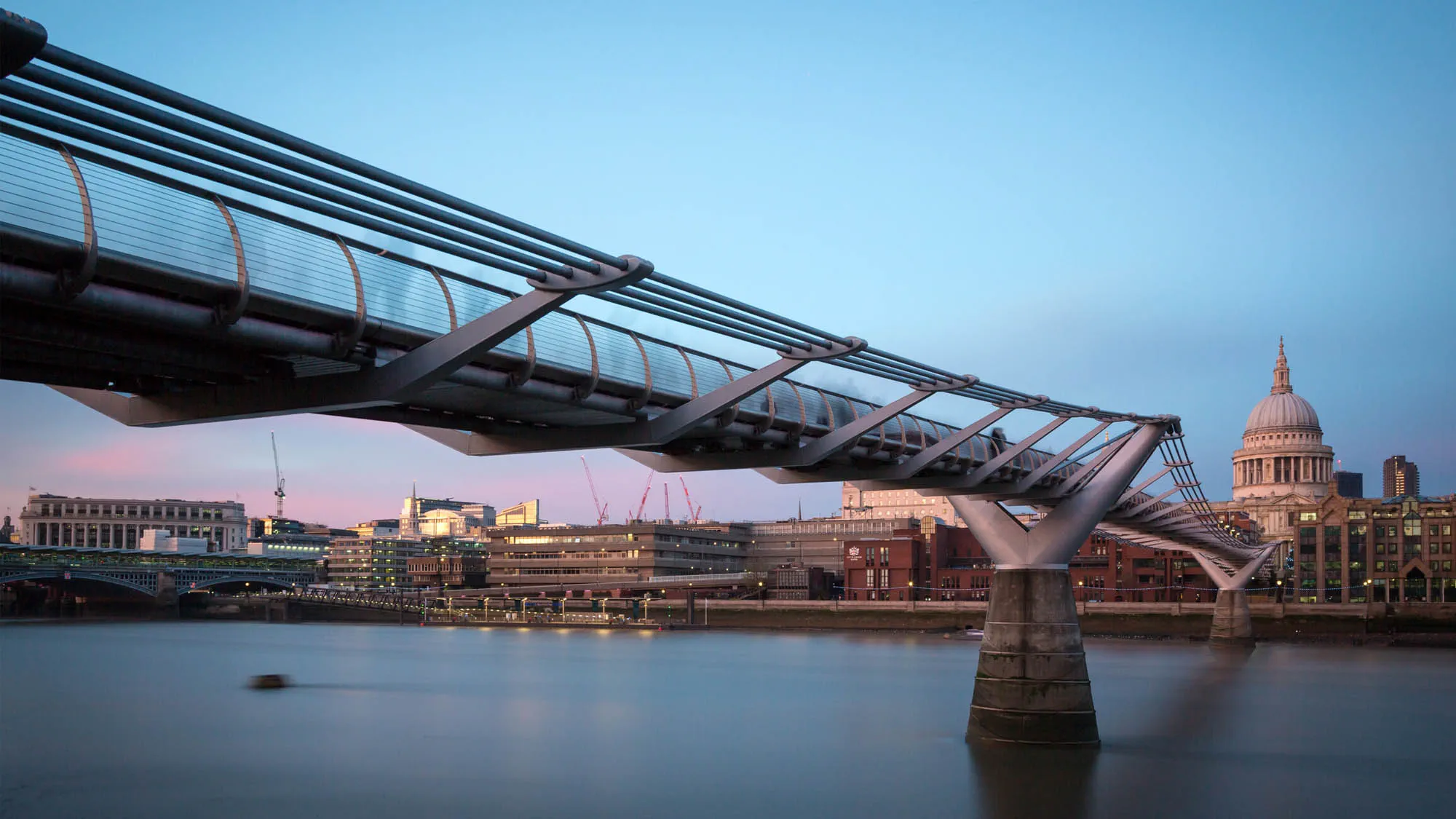 ;
;





